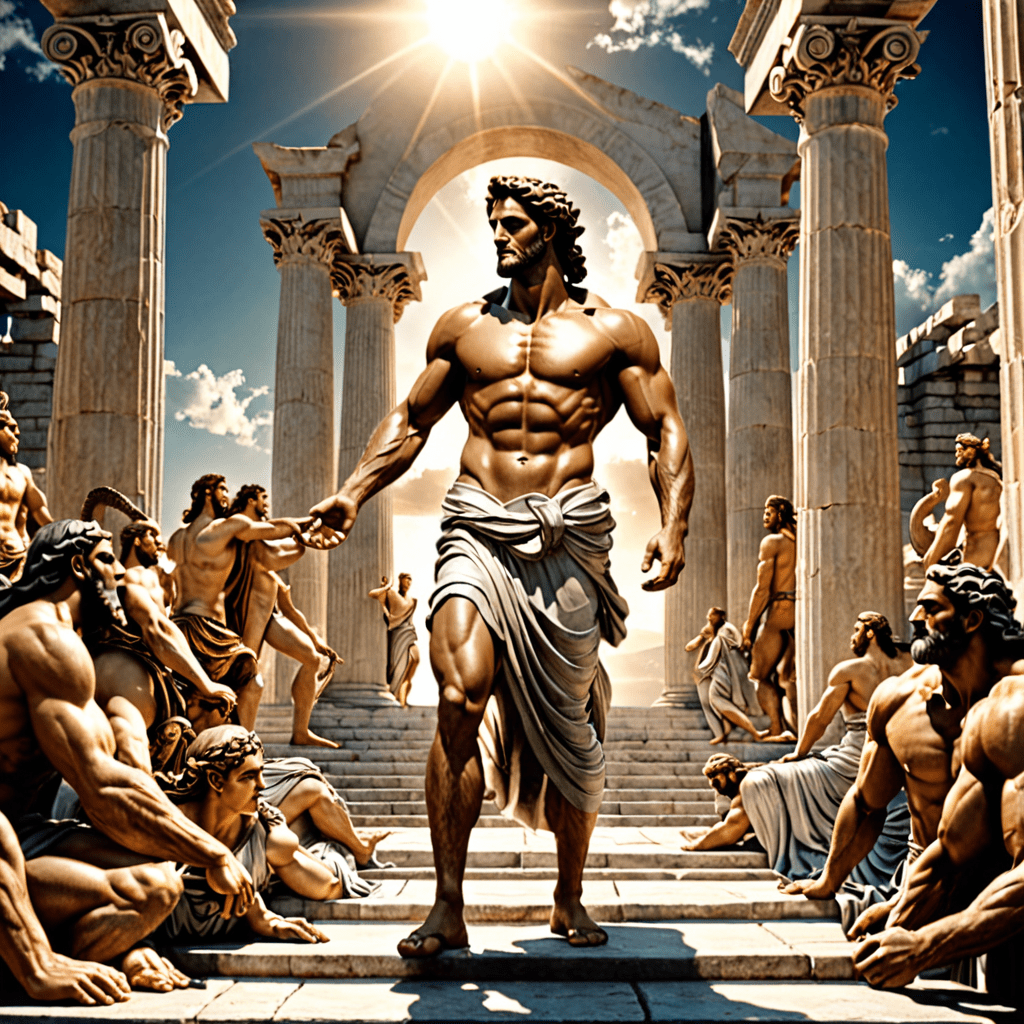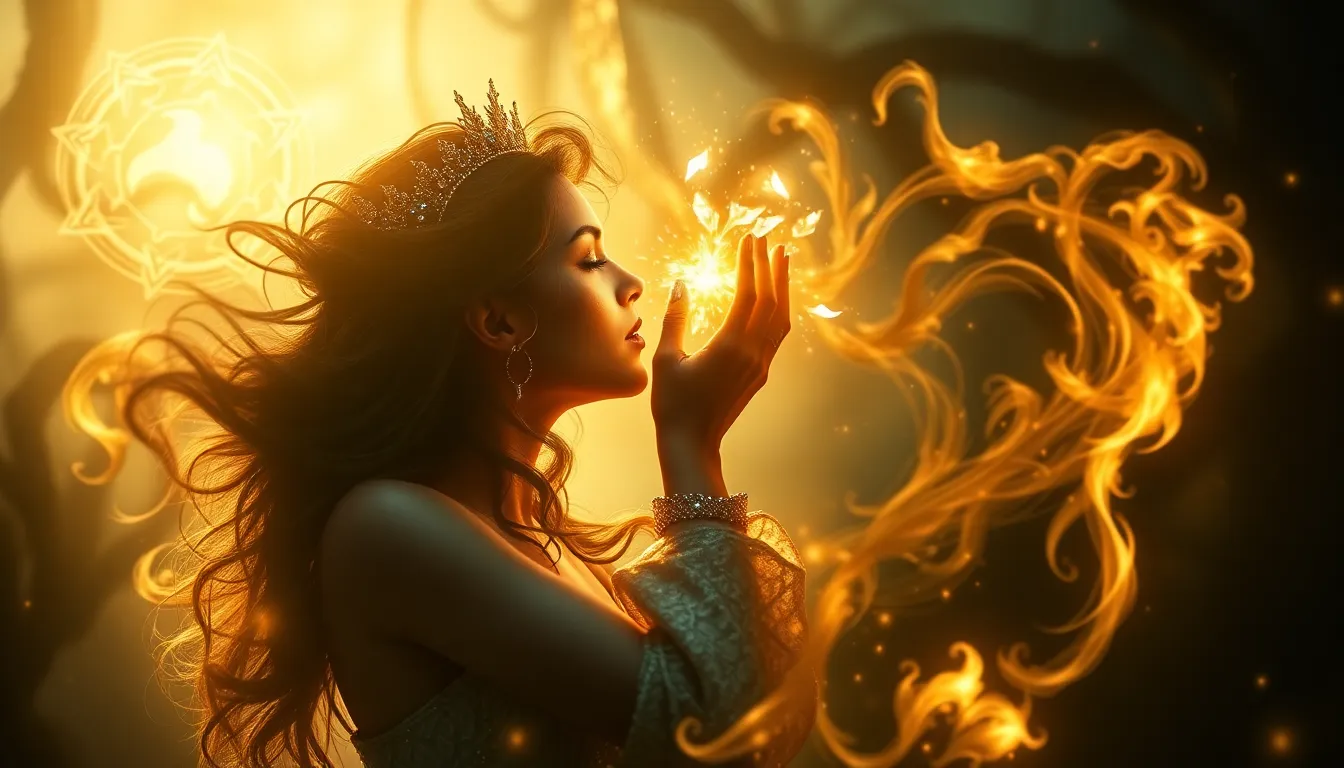The Most Intriguing Tales of Ancient Deities and Their Powers
I. Introduction
Throughout history, ancient deities have played a pivotal role in shaping the beliefs and cultures of societies. From the gods of the Greeks and Romans to the spirits of indigenous peoples, these divine figures reflect the values, fears, and hopes of their people. Myths and legends surrounding these deities offer profound insights into human nature and the cosmos, providing a lens through which we can examine ancient civilizations.
The purpose of this exploration is to delve into some of the most intriguing tales of ancient deities and their powers, revealing not only their characteristics and stories but also their implications for understanding the human experience across cultures.
II. The Pantheon of Power: Understanding Ancient Deities
Deities, in various ancient societies, were often seen as powerful beings that governed different aspects of life and the natural world. They were central figures in religious practices and were invoked for protection, guidance, and intervention in human affairs.
- Definition and Role: Deities are often defined as supernatural beings with significant power over aspects of existence, such as creation, destruction, and the afterlife.
- Major vs. Minor Gods: Major gods typically held dominion over fundamental aspects of existence (e.g., creation, war), while minor gods often presided over more specific domains or local affairs.
- Natural Phenomena: Many deities were closely associated with natural elements, embodying forces such as the sun, moon, water, and storms, thereby reflecting humanity’s relationship with nature.
III. Greek Mythology: The Olympians and Their Quirks
Greek mythology is rich with tales of gods and goddesses who exhibit human-like traits and emotions, making their stories relatable and timeless.
A. Zeus: King of the Gods and His Thunderous Reign
As the ruler of Mount Olympus, Zeus was the god of the sky and thunder. His numerous affairs and offspring with both goddesses and mortals illustrate his power and complexity. He wielded the lightning bolt as his weapon, symbolizing both his authority and his volatile nature.
B. Athena: The Goddess of Wisdom and Warfare
Athena, born from the forehead of Zeus, was revered as the goddess of wisdom, courage, and warfare. Her strategic prowess in battle and her role as a protector of cities, especially Athens, highlight the importance of intelligence and skill over brute strength.
C. Dionysus: The God of Wine and Ecstasy
Dionysus represented not only wine and festivity but also the chaotic and unpredictable nature of life. His rituals often involved ecstatic celebrations, reflecting the duality of joy and madness inherent in human experience.
IV. Egyptian Deities: Guardians of the Afterlife
Ancient Egyptian deities held crucial roles in the beliefs surrounding the afterlife, reflecting the civilization’s deep reverence for life and death.
A. Osiris: The God of the Afterlife and Resurrection
Osiris, often depicted as a mummified king, was the god of the afterlife and resurrection. His story of death and rebirth symbolized the cycle of life and the hope for eternal life beyond the grave.
B. Isis: The Mother Goddess and Protector of the Downtrodden
Isis, the wife of Osiris, was revered as a powerful mother figure and protector of the weak. She embodied the ideals of compassion and motherhood, often invoked for healing and protection.
C. Anubis: The Guide of Souls and the God of Mummification
Anubis, with his jackal head, was responsible for guiding souls to the afterlife. His association with mummification and funerary rites underscores the Egyptians’ belief in the importance of preserving the body for the journey after death.
V. Norse Mythology: The Aesir and Their Fates
Norse mythology presents a complex pantheon with deities that embody various human characteristics, including wisdom, strength, and mischief.
A. Odin: The All-Father and Seeker of Knowledge
Odin, the chief of the Aesir, was depicted as a wise and powerful figure, often sacrificing his own eye for wisdom. His relentless pursuit of knowledge and understanding of the cosmos reflects the Norse ideal of wisdom through sacrifice.
B. Thor: The Thunder God and Defender of Humanity
Thor, known for his immense strength and wielding the hammer Mjölnir, was the protector of mankind against chaos and giants. His stories emphasize bravery and the importance of defending one’s community.
C. Loki: The Trickster God and His Dual Nature
Loki is a complex figure known for his cunning and mischief. His unpredictable nature and role in the events leading to Ragnarok showcase the duality of creation and destruction inherent in the Norse worldview.
VI. Hindu Deities: The Complexity of Divine Powers
Hinduism features a diverse array of deities, each with unique attributes and stories that reflect the complexity of existence.
A. Brahma, Vishnu, and Shiva: The Trimurti and Their Cosmic Roles
The Trimurti represents the three principal deities of Hinduism: Brahma the creator, Vishnu the preserver, and Shiva the destroyer. Together, they encapsulate the cycle of creation, preservation, and destruction that governs the universe.
B. Durga: The Warrior Goddess and Symbol of Feminine Power
Durga is celebrated as a fierce warrior goddess who combats evil and protects dharma (cosmic order). Her numerous arms symbolize her ability to overcome challenges and embody the strength of femininity.
C. Ganesha: The Remover of Obstacles and God of Beginnings
Ganesha, easily recognized by his elephant head, is worshipped as the remover of obstacles and the god of new beginnings. His presence is invoked at the start of rituals and ventures, symbolizing hope and prosperity.
VII. Indigenous Mythologies: Nature Spirits and Ancestors
Indigenous mythologies often emphasize the connection between the divine and the natural world, reflecting a deep respect for nature and ancestral spirits.
A. Native American Deities and Their Connection to Nature
Native American cultures often feature deities that embody natural elements such as the sun, moon, and animals. These deities serve as guardians of the earth and are integral to rituals that honor the environment.
B. African Tribal Gods and Ancestral Worship
African tribal religions frequently incorporate ancestral worship and the veneration of gods associated with nature and fertility. These beliefs reflect the importance of community and heritage in African cultures.
C. Australian Aboriginal Dreamtime and Its Creator Beings
The Dreamtime is a foundational concept in Australian Aboriginal mythology, encompassing the creation stories and spiritual beliefs about the land and its creatures, highlighting the interconnectedness of all life.
VIII. Mesopotamian Deities: The Cradle of Civilization
Mesopotamia, often referred to as the cradle of civilization, housed a rich pantheon of gods and goddesses that influenced various aspects of life.
A. Anu: The Sky God and the Head of the Pantheon
Anu, the god of the sky, was regarded as the father of the gods and the creator of civilization. His authority emphasized the importance of order and justice in society.
B. Ishtar: The Goddess of Love and War
Ishtar represented the duality of love and warfare, embodying the complexities of human emotions and desires. Her worship often involved rituals that celebrated fertility and conflict.
C. Enki: The God of Wisdom and Water
Enki, the god of wisdom and water, was associated with creation and fertility. His role as a benefactor of humanity highlights the Mesopotamian belief in the gods’ support of human endeavors.
IX. The Legacy of Ancient Deities in Modern Culture
The stories and attributes of ancient deities continue to resonate in modern culture, influencing literature, art, and popular media. The archetypes of these gods and goddesses reflect enduring human themes—love, power, conflict, and the quest for knowledge—making them timeless figures in the collective consciousness. As we explore these ancient tales, we gain a deeper understanding of how they shaped human civilization and continue to inform our beliefs and values today.




